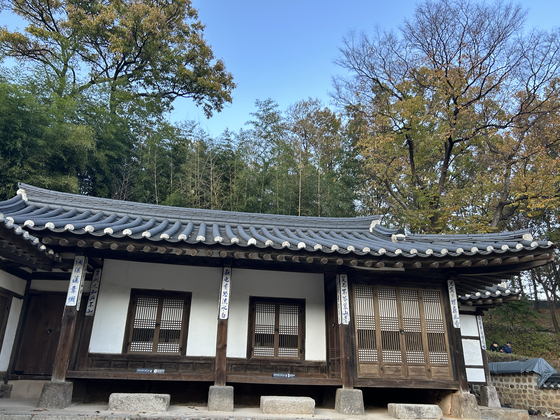Beauty of Traditional Korean Roof Tiles: Giwa [Photo Essay Contest]

The Korea JoongAng Daily hosted its first photo essay contest for elementary, middle and high school students on the theme: “Promote the beauty of Korea to foreign countries." The contest ran from October to November. Photos containing scenes of traditional culture, family love, places to see and tasty treats in Korea were submitted for the contest.
Lily Park from Younghoon Elementary School won the gold prize in the elementary school category for this photo essay.
When you think about South Korean culture, do you mostly think about the famous hanbok or famous Gyeongbokgung? Other than these outstanding buildings and outwears, you might’ve seen something called a giwa. A giwa is a South Korean roof tile, mainly used in old buildings in the past. An example of where it is placed is Gyeongbokgung. Due to the memories I've made with my friends at Gyeongbokgung, admiring the beauty and the various types of patterns on the giwa has been the particular reason I‘ve taken a liking in giwas. The breath-taking giwas on past South Korean buildings are a beauty and key feature to admire. South Korean giwas were approximately created 3000 years ago. Aside from the beauty of these South Korean roof tiles, there are actually some symbolic meanings and history behind them.
Let’s take a look at some of the reasons why old South Koreans had these roof tiles on their houses. One of them is intended to scare away evil spirits and ghosts. In South Korea, people used to believe that ghosts lurked in the deep dark forests at night. For example, South Koreans still eat red bean soup as a culture to ward off ghosts. Similar to this, some giwas have faces that glare at you so it can ward off ghosts, or such. Thus, showing us that these roof tiles are not only beautiful, but also symbolic and shows what people were like during the past.
Another myth people believed in that was related to giwas was the fact that South Koreans believe they protected their wooden houses. In the past, South Korean houses were mostly made out of wood, so there were a lot of fires that rapidly spread. So, people believed that giwas, which were made out of kneaded clay, cement, and metal could guard their homes and protect it. No, people didn’t believe just any giwas wood protected their wooden homes from fires, but they believed that animals that were associated with water carved into the giwa would protect their beloved homes. For instance, animals like dragons that are associated with water would "protect" their houses from fires by being the guardians of the home. In addition, they reduced the chances of getting their house burnt.
Having giwas in a famous place like Gyeongbokgung has made the building and place look more enhanced, and fitting to Korean culture. Gyeongbokgung is a place in Korea that also has giwas on several of their infrastructure. The beautiful patterns of animals and other symbols can be something foreigners and even South Koreans can look into deeply, therefore, making giwas a major part and feature in South Korean culture.
To conclude, there is no doubt that giwas can be an outstanding feature in Korean buildings. However, it is also important to consider the superstitions, key features, and also some parts of their history to appreciate South Korean culture. How much giwas are a part of the beauty, mythology, and culture in South Korea is beautiful.
By Lily Park, Younghoon Elementary School










with the Korea JoongAng Daily
To write comments, please log in to one of the accounts.
Standards Board Policy (0/250자)